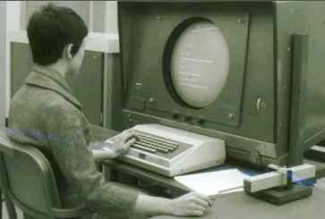
In the age of the connected digital Network, they call it “discovery”. It’s not what you like right now, or what you’ve liked in the past — it might be described as what you’ll like in the future. Mostly it doesn’t work, but on occasion something delightful it discovered. The algorithm usually goes like this: if you like tea, you’d probably also like this weak tea. When a discovery occurs, it usually has nothing to do with tea.
The problem is “discovery” actually works through leaps, gaps and other forms of discontinuities. Algorithms can provide options along a path of logical extension. The further the extension moves from the source, the weaker the connection. The strange thing is that when the connection becomes so weak it’s non-existent, that’s when discovery might happen. Machines that attempt to replicate serendipity have trouble with this last piece. That zone of strangeness feels a bit like chaos to them — there’s no reason at all to take the next step in any particular direction. If you’ve been down this road, you know this point in a process of discovery is different from randomness. The accumulated context makes a difference.
When you’re young and for the first time discovering a lot of new music, there’s always some older figure who turns you on to the music from your future. There are new worlds in front of you — outside your realm of experience. A stack of records can give you a preview into the soundtrack of these alien worlds. This is how young minds are blown. It’s also the kind of peak experience that can stay with you for a lifetime. To some extent, all music going forward will be compared to those transformational sounds.
Once you’ve grown up, figured out what you like and filled up your library with your favorites; discovery becomes a much more difficult process. That transformational process isn’t likely to happen again. You “are” that older figure, and now you’re annoyed that young people today don’t appreciate the music that first turned you on.
If you’re storing your music in the cloud, your music provider probably knows your library better than you do. Every “play” is logged and plotted to determine what you currently like and what you’ll like and purchase next. This is where you’ll find complex genomes of music underlying auto-generated playlists mixing with the quantified self.
I recently discovered a band called “Company of Thieves“. I wasn’t looking for them, or anything like them. I was actually more interested in learning about what Daryl Hall was doing these days. I’d had an interest in him since his first solo album produced by King Crimson’s Robert Fripp — the long delayed “Sacred Songs“. (Check out his vocals on the song “North Star“). I’d seen a few moments of “Live from Daryl’s House” on television and traced it back to the web. YouTube provided a nice selection of the greatest hits from the show. The clips of “Company of Thieves” kept drawing me back. There was something about them. There isn’t an obvious link between Daryl Hall’s music and what Company of Thieves does. There’s no recommendation engine that spit would out “if you like Daryl Hall, you’ll probably like Company of Thieves”.

Chicago-based Company of Thieves (Genevieve Schatz and Marc Walloch) has released two albums on Wind-Up Records, but despite their best efforts hadn’t broken through on any of the media that I follow. The band’s appearance on “Live from Daryl’s House” was in January of 2009. It’s with these four-year old videos that I started following their story. There’s not much in the mainstream music press. It was really through YouTube that I was able to piece together an idea of the range of the band’s sound.
While I loved The Beatles when I was younger, these days I find it hard to listen to them. I’ve heard the songs too many times. It’s the Beatles Anthology recordings that still have some interest for me. I like hearing the songs in their rough form, it’s there that I can see through to the bones of the song to see if it still works. Company of Thieves has done something similar. Their finished recordings have very complex and compelling arrangements; the band gets a very big sound. But they’ve also released videos of acoustic performances of their songs — and not in an ideal studio environment. Instead, they perform out in the world, without a net. Not only can they actually perform the songs from their recordings, they can put them across in the ordinary world — on a beach, riding in a car, on a moving train, at an amusement park and walking down the street in the rain. To me, that makes a connection that a lot of computer-based music has lost.
When I think about the criteria used in my process of discovery, it doesn’t seem like something that could be wrapped up into an algorithm, scaled up and served out to the masses. I want something that I’ve never heard before. It might even be something that I don’t initially like; something that takes a while to grow on me. It might even take a couple of weeks before I decide that I need to buy this music and support the artists. This kind of discovery is pretty rare, and that’s part of what’s good about it. If I could push button and receive a new discovery every day that was custom-built based on the artifacts of my listening behavior, it would soon grow boring. And what could be worse than a cloud-based networked computer program that effectively caused me to become bored with my own taste.
I understand that Company of Thieves is working on some new music. That makes me smile.
Comments closed









